-
 Bitcoin
Bitcoin $115200
-2.56% -
 Ethereum
Ethereum $3619
1.19% -
 XRP
XRP $3.066
0.63% -
 Tether USDt
Tether USDt $1.000
-0.05% -
 BNB
BNB $759.4
0.45% -
 Solana
Solana $177.0
-3.28% -
 USDC
USDC $1.000
-0.03% -
 Dogecoin
Dogecoin $0.2254
-2.67% -
 TRON
TRON $0.3146
2.97% -
 Cardano
Cardano $0.7939
1.40% -
 Hyperliquid
Hyperliquid $42.05
-0.56% -
 Stellar
Stellar $0.4140
0.36% -
 Sui
Sui $3.641
0.05% -
 Chainlink
Chainlink $17.42
-1.08% -
 Bitcoin Cash
Bitcoin Cash $525.2
4.81% -
 Hedera
Hedera $0.2367
-0.15% -
 Avalanche
Avalanche $23.06
-0.42% -
 Litecoin
Litecoin $111.3
1.23% -
 UNUS SED LEO
UNUS SED LEO $8.970
-0.31% -
 Shiba Inu
Shiba Inu $0.00001330
-0.25% -
 Toncoin
Toncoin $3.092
-0.55% -
 Ethena USDe
Ethena USDe $1.001
-0.04% -
 Polkadot
Polkadot $3.934
-1.53% -
 Uniswap
Uniswap $9.948
0.56% -
 Monero
Monero $322.7
2.58% -
 Dai
Dai $0.0000
-0.01% -
 Bitget Token
Bitget Token $4.440
-2.75% -
 Pepe
Pepe $0.00001199
-2.25% -
 Aave
Aave $285.6
0.78% -
 Cronos
Cronos $0.1294
6.68%
MACD 막대 차트 발산을 분석하는 방법은 무엇입니까? 제로 축 위의 크로스 신호를 사용하는 방법?
MACD BAR 차트 발산은 거래자가 잠재적 인 반전을 발견하는 데 도움이됩니다. 가격이 떨어지지 만 MACD 최저가 상승하면 가격이 높아지지만 MACD 최고치가 떨어질 때는 약세가 상승 할 때 낙관적입니다.
2025/06/07 12:08
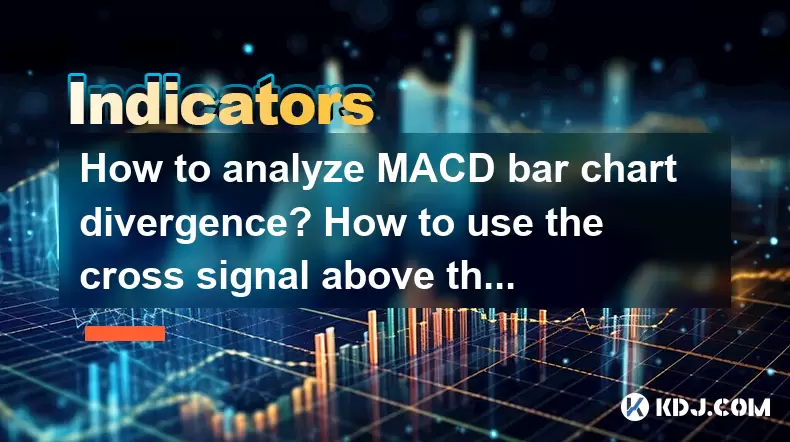
MACD 막대 차트 발산 소개
이동 평균 수렴 발산 (MACD)은 암호 화폐 트레이더가 모멘텀을 측정하고 추세 변경을 식별하며 구매 또는 판매 신호를 생성하는 데 사용되는 인기있는 기술 지표입니다. MACD의 주요 특징 중 하나는 가격 행동과 모멘텀 사이의 차이를 드러내는 능력으로 시장의 잠재적 역전 또는 연속을 알 수 있습니다. MACD BAR 차트 차트 발산을 이해하는 것은 거래 전략을 개선하려는 거래자에게 중요합니다. 이 기사는 MACD 막대 차트 발산을 분석하는 방법과 제로 축 위의 크로스 신호를 효과적으로 사용하는 방법을 탐구합니다.
MACD 막대 차트 발산 이해
MACD 막대 차트 발산은 암호 화폐 가격과 MACD 표시기의 가격이 반대 방향으로 이동할 때 발생합니다. 이 차이는 두 가지 주요 유형의 강세 차이 와 약세 차이 로 분류 될 수 있습니다.
- 낙관적 발산은 cryptocurrency의 가격이 낮은 최저점을 형성하지만 MACD가 더 높은 최저점을 형성 할 때 발생합니다. 이는 하향 운동량이 약화되고 잠재적 상향 반전이 임박 할 수 있음을 나타냅니다.
- 약세의 발산은 암호 화폐의 가격이 더 높은 최고를 형성하지만 MACD가 더 낮은 고위를 형성 할 때 발생합니다. 이것은 상향 운동량이 약화되고 잠재적 인 하향 반전이 수평선에있을 수 있음을 시사합니다.
MACD 막대 차트 발산을 효과적으로 분석하려면 거래자가 다음 단계를 수행해야합니다.
- 가격 추세를 식별하십시오 : 가격 차트를보고 암호 화폐가 상승 추세인지 또는 하락세에 있는지 확인하십시오.
- 가격 행동을 MACD와 비교 : 가격 차트에서 MACD 지표를 오버레이하고 최근 가격 변동과 해당 MACD 막대와 비교하십시오.
- 차이를 발견하십시오 : 가격과 MACD가 반대 방향으로 이동하는 인스턴스를 찾으십시오. 예를 들어, 가격이 낮은 최저치를 만들지 만 MACD가 더 높은 최저점을 만들면 낙관적 인 발산이 있습니다.
- 신호 확인 : 발산만으로는 거래 신호가 아닙니다. 낙관적 발산을위한 낙관적 촛대 패턴 또는 약세의 발산을위한 약세 촛대 패턴과 같은 다른 기술 지표 또는 가격 행동 패턴으로 확인해야합니다.
MACD 막대 차트에서 낙관적 발산 분석
MACD 막대 차트의 강세 발산을 분석하려면 다음 단계를 따르십시오.
- 다운 트렌드 식별 : 가격 차트에서 일련의 낮은 최저치를 찾아 하향 추세를 나타냅니다.
- MACD 확인 : MACD 막대를 관찰하십시오. MACD가 더 높은 최저치를 형성하는 동안 가격이 낮은 최저점을 만들면 낙관적 인 발산이 있습니다.
- 다른 지표로 확인하십시오 . 상대 강도 지수 (RSI) 또는 이동 평균과 같은 추가 표시기를 사용하여 잠재적 역전을 확인하십시오. 예를 들어, RSI가 과매도 조건을 보여 주면 낙관적 인 반전의 사례가 강화됩니다.
- 진입 점을 찾으십시오 : 낙관적 발산이 확인되면 낙관적 촛대 패턴이나 입력 신호로 키 저항 수준 이상의 브레이크를 찾으십시오.
MACD 막대 차트에서 베어 리쉬 발산 분석
MACD 막대 차트의 베어 리쉬 발산을 분석하려면 다음 단계를 따르십시오.
- 상승 추세를 식별하십시오 : 가격 차트에서 일련의 높은 최고를 찾아 상승 추세를 나타냅니다.
- MACD 확인 : MACD 막대를 관찰하십시오. MACD가 더 높은 최고치를 형성하는 동안 가격이 높게 높아지면 약세의 발산이 존재합니다.
- 다른 지표로 확인하십시오 . RSI 또는 이동 평균과 같은 추가 표시기를 사용하여 잠재적 역전을 확인하십시오. 예를 들어, RSI가 과잉 구매 조건을 보여 주면 약세 반전의 사례가 강화됩니다.
- 진입 점을 찾으십시오 : 약세 발산이 확인되면, 입장 신호로서 촛대 패턴이나 주요 지원 수준 아래의 브레이크를 찾으십시오.
제로 축 위의 MACD 크로스 신호를 사용합니다
제로 축 위의 MACD 크로스 신호는 암호 화폐 거래자에게 또 다른 귀중한 도구입니다. 이 신호는 MACD 라인이 신호 라인 위로 넘어지고 두 가지가 제로 축 위에있을 때 발생합니다. 이는 강세 운동량이 강화되고 있으며 구매 신호로 사용될 수 있음을 나타냅니다.
제로 축 위의 MACD 크로스 신호를 효과적으로 사용하려면 다음을 수행하십시오.
- MACD 및 신호 라인을 모니터링하십시오 : MACD 라인과 신호 라인을 주시하십시오. MACD 라인은 12- 기간과 26 기 지수 이동 평균의 차이이며, 신호 라인은 MACD 라인의 9- 기수 이동 평균입니다.
- 제로 축 위의 십자가를 식별하십시오 : MACD 라인이 신호 라인 위로 가로 지르고 둘 다 제로 축 위에 있습니다. 이것은 강세의 추진력이 증가 함을 나타냅니다.
- 신호 확인 : 거래 신호와 마찬가지로 다른 기술 지표 또는 가격 조치로 MACD 교차 신호를 확인하는 것이 중요합니다. 예를 들어, 가격이 키 저항 수준을 높이면 구매 신호가 강화됩니다.
- 거래 입력 : 신호가 확인되면 긴 위치에 들어가는 것을 고려하십시오. 위험을 관리하기 위해 최근 스윙 저 아래에서 스톱 손실 주문을 설정하십시오.
제로 축 위의 MACD 크로스 신호 사용의 실제 예
제로 축 위의 MACD 크로스 신호를 사용하는 방법을 설명하기위한 실용적인 예를 고려해 봅시다.
- cryptocurrency 선택 : Bitcoin (BTC)와 같이 거래에 관심이있는 암호 화폐를 선택하십시오.
- 차트 설정 : BTC의 가격 차트를 열고 기본 설정 (12, 26, 9)으로 MACD 표시기를 추가하십시오.
- MACD 및 신호 라인을 모니터링합니다 . 두 가지 축 위에있는 동안 MACD 라인이 신호 라인 위로 교차하는 것을 지켜보십시오.
- 십자가 식별 : MACD 라인이 신호 라인 위로 넘어 가면 $ 50,000의 가격으로 두 사람이 제로 축 위에 있다고 가정하십시오.
- 신호 확인 : RSI 또는 이동 평균과 같은 다른 표시기를 확인하십시오. RSI가 과출하지 않고 가격이 50 일 이동 평균보다 높으면 신호가 확인됩니다.
- 거래 입력 : 최근의 스윙 낮은 바로 아래에서 49,000 달러로 정지 손실 주문으로 $ 50,000에 긴 포지션을 입력하십시오.
자주 묻는 질문
Q : 모든 cryptocurrencies에 MACD 막대 차트 발산을 사용할 수 있습니까?
A : 예, MACD 막대 차트 발산은 모든 암호 화폐에 적용될 수 있습니다. 그러나 효율성은 특정 암호 화폐의 유동성과 변동성에 따라 달라질 수 있습니다. Bitcoin 및 이더 리움과 같은 더 많은 액체 자산은 더 안정적인 신호를 생성하는 경향이 있습니다.
Q : MACD 막대 차트 발산을 얼마나 자주 확인해야합니까?
A : 특히 짧은 기간 동안 거래하는 경우 매일 MACD Bar 차트 차트 분기를 확인하는 것이 좋습니다. 장기 거래의 경우 주간 수표로 충분할 수 있습니다.
Q : 제로 축 위의 MACD 크로스 신호를 독립형 신호로 사용할 수 있습니까?
A : 제로 축 위의 MACD 교차 신호는 강세 모멘텀의 강력한 지표가 될 수 있지만, 다른 기술 지표 및 가격 조치 분석과 함께 사용될 때 일반적으로 신호를 확인하기 위해 더 효과적입니다.
Q : MACD 막대 차트 발산 및 크로스 신호를 사용할 때 일반적인 함정은 무엇입니까?
A : 일반적인 함정에는 확인없이 발산 또는 크로스 신호에만 의존하고 신호가 이미 재생 된 후 너무 늦게 거래를 시작하고 위험 관리를 위해 적절한 중단 손실 주문을 설정하지 않습니다. 이러한 신호는 항상 포괄적 인 거래 전략의 일부로 사용하십시오.
부인 성명:info@kdj.com
제공된 정보는 거래 조언이 아닙니다. kdj.com은 이 기사에 제공된 정보를 기반으로 이루어진 투자에 대해 어떠한 책임도 지지 않습니다. 암호화폐는 변동성이 매우 높으므로 철저한 조사 후 신중하게 투자하는 것이 좋습니다!
본 웹사이트에 사용된 내용이 귀하의 저작권을 침해한다고 판단되는 경우, 즉시 당사(info@kdj.com)로 연락주시면 즉시 삭제하도록 하겠습니다.
- Litecoin Price Breakout Imminent? 랠리 잠재력이 탐구되었습니다!
- 2025-07-25 17:30:12
- ETHER ETFS SURGE, BITCOIN WOBBLES : ETH BREAKOUT가 임박합니까?
- 2025-07-25 16:50:12
- 비트 코인, 스위프트 및 사전 살인 : 2025 년 암호화 풍경 탐색
- 2025-07-25 17:30:12
- 가상 ID, UID 토큰 및 Aadhaar 번호 탐색 : 개인 정보 보호 우선 접근 방식
- 2025-07-25 17:36:12
- 비트 코인, 대칭 삼각형 및 위대한 미지의 : 다음은 무엇입니까?
- 2025-07-25 16:30:12
- Eigenlayer의 멀티 체인 AVS 생태계 : Web3의 새로운 시대?
- 2025-07-25 16:30:12
관련 지식

KDJ 표시기가 낮은 수준에서 이중 바닥을 형성한다는 것은 무엇을 의미합니까?
2025-07-25 17:08:16
cryptocurrency 거래에서 KDJ 지표 이해 KDJ 표시기 는 암호 화폐 거래에 널리 사용되는 추진력 발진기이며 과출 및 과산 조건을 식별합니다. 확률 론적 발진기 의 요소를 결합하고 감도를 향상시키기 위해 J 라인을 추가합니다. 표시기는 k 라인 (빠른 확률...
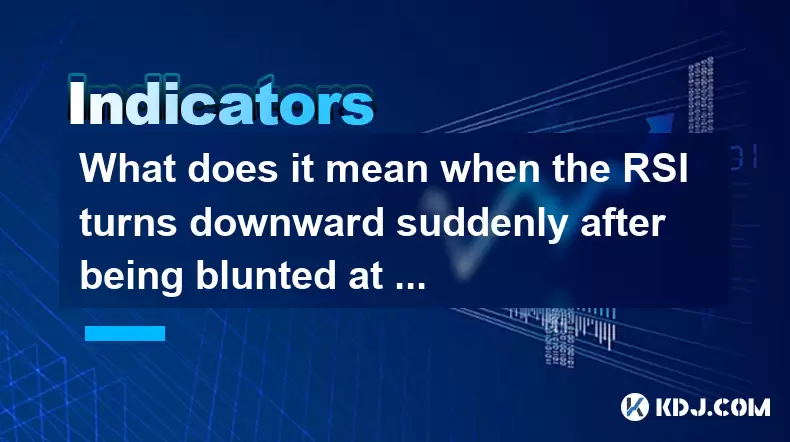
높은 수준에서 둔화 된 후 RSI가 갑자기 하향 하락하면 무엇을 의미합니까?
2025-07-25 16:00:31
RSI와 기술 분석에서의 역할 이해 상대 강도 지수 (RSI)는 0에서 100까지 규모로 가격 변동의 속도와 변화를 측정하는 모멘텀 발진기입니다. 암호 화폐를 포함한 금융 시장에서 과매 또는 과매도 조건을 식별하는 데 상인에 의해 널리 사용됩니다. 일반적으로 70 이상...
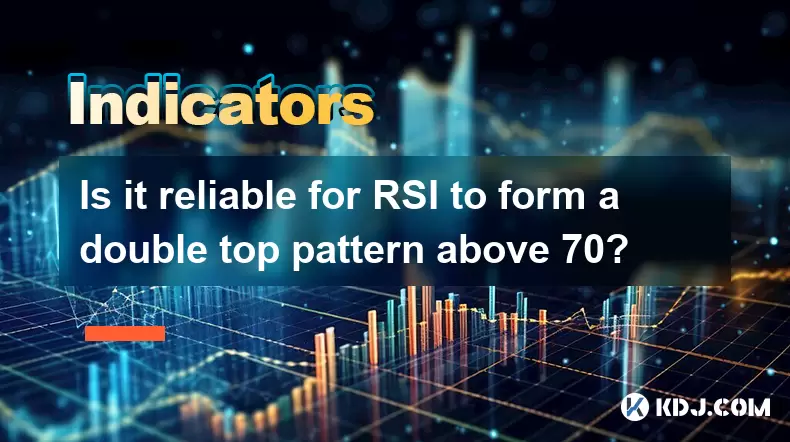
RSI가 70 이상으로 이중 상단 패턴을 형성하는 것이 신뢰할 수 있습니까?
2025-07-25 16:49:39
RSI 지표 및 기술 분석에서의 역할 이해 상대 강도 지수 (RSI)는 0에서 100까지 규모로 가격 변동의 속도와 변화를 측정하는 모멘텀 발진기입니다. 암호 화폐를 포함한 금융 시장에서 과매 또는 과매도 조건을 식별하는 데 상인에 의해 널리 사용됩니다. RSI 값이 ...
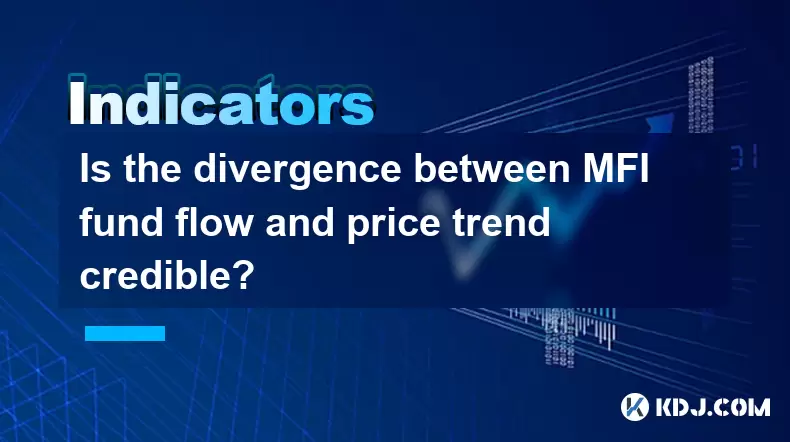
MFI 펀드 흐름과 가격 추세 사이의 차이가 신뢰할 수 있습니까?
2025-07-25 12:01:02
암호 화폐 시장에서 MFI 및 펀드 흐름을 이해합니다 MFI (Money Flow Index)는 Cryptocurrency 시장의 구매 및 판매 압력을 평가하기 위해 가격과 양을 결합한 기술 발진기입니다. 가격에만 의존하는보다 일반적으로 알려진 상대 강도 지수 (RSI...
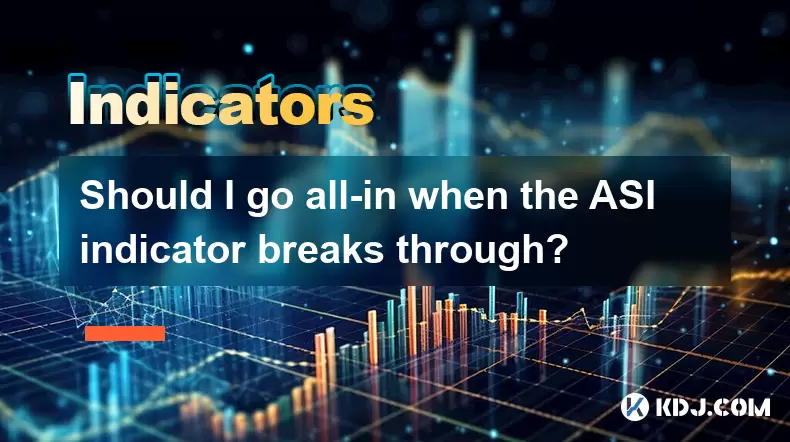
ASI 표시기가 끊어지면 올인해야합니까?
2025-07-25 13:56:28
ASI 지표와 그 중요성을 이해합니다 ASI (Accumulation Swing Index)는 RSI 및 ATR 지표의 동일한 제작자 인 Welles Wilder 가 개발 한 기술 분석 도구입니다. ASI는 간격, 가격 변동 및 변동성을 고려하여 가격 변동의 진정한 강...
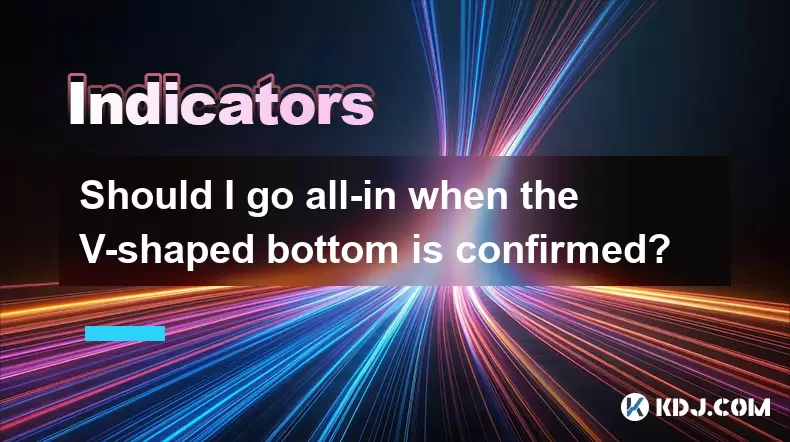
V 자형 바닥이 확인되면 올인해야합니까?
2025-07-25 17:56:32
cryptocurrency 시장에서 V 자형 바닥을 이해합니다 V 자형 바닥 은 기술 차트 패턴으로 가격이 급격히 감소한 다음 빠른 회복으로 'V'모양을 형성합니다. 이 패턴은 변동성과 반전이 발생할 수있는 속도로 인해 cryptocurrency 시장에서...

KDJ 표시기가 낮은 수준에서 이중 바닥을 형성한다는 것은 무엇을 의미합니까?
2025-07-25 17:08:16
cryptocurrency 거래에서 KDJ 지표 이해 KDJ 표시기 는 암호 화폐 거래에 널리 사용되는 추진력 발진기이며 과출 및 과산 조건을 식별합니다. 확률 론적 발진기 의 요소를 결합하고 감도를 향상시키기 위해 J 라인을 추가합니다. 표시기는 k 라인 (빠른 확률...

높은 수준에서 둔화 된 후 RSI가 갑자기 하향 하락하면 무엇을 의미합니까?
2025-07-25 16:00:31
RSI와 기술 분석에서의 역할 이해 상대 강도 지수 (RSI)는 0에서 100까지 규모로 가격 변동의 속도와 변화를 측정하는 모멘텀 발진기입니다. 암호 화폐를 포함한 금융 시장에서 과매 또는 과매도 조건을 식별하는 데 상인에 의해 널리 사용됩니다. 일반적으로 70 이상...

RSI가 70 이상으로 이중 상단 패턴을 형성하는 것이 신뢰할 수 있습니까?
2025-07-25 16:49:39
RSI 지표 및 기술 분석에서의 역할 이해 상대 강도 지수 (RSI)는 0에서 100까지 규모로 가격 변동의 속도와 변화를 측정하는 모멘텀 발진기입니다. 암호 화폐를 포함한 금융 시장에서 과매 또는 과매도 조건을 식별하는 데 상인에 의해 널리 사용됩니다. RSI 값이 ...

MFI 펀드 흐름과 가격 추세 사이의 차이가 신뢰할 수 있습니까?
2025-07-25 12:01:02
암호 화폐 시장에서 MFI 및 펀드 흐름을 이해합니다 MFI (Money Flow Index)는 Cryptocurrency 시장의 구매 및 판매 압력을 평가하기 위해 가격과 양을 결합한 기술 발진기입니다. 가격에만 의존하는보다 일반적으로 알려진 상대 강도 지수 (RSI...

ASI 표시기가 끊어지면 올인해야합니까?
2025-07-25 13:56:28
ASI 지표와 그 중요성을 이해합니다 ASI (Accumulation Swing Index)는 RSI 및 ATR 지표의 동일한 제작자 인 Welles Wilder 가 개발 한 기술 분석 도구입니다. ASI는 간격, 가격 변동 및 변동성을 고려하여 가격 변동의 진정한 강...

V 자형 바닥이 확인되면 올인해야합니까?
2025-07-25 17:56:32
cryptocurrency 시장에서 V 자형 바닥을 이해합니다 V 자형 바닥 은 기술 차트 패턴으로 가격이 급격히 감소한 다음 빠른 회복으로 'V'모양을 형성합니다. 이 패턴은 변동성과 반전이 발생할 수있는 속도로 인해 cryptocurrency 시장에서...
모든 기사 보기




























































